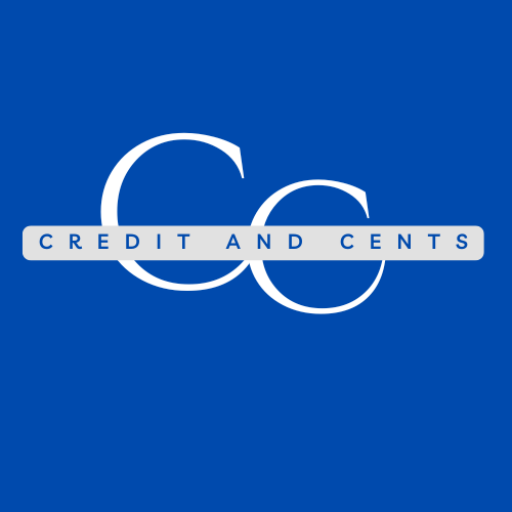
This article contains links from our affiliate partners. Credit and Cents may earn a commission from affiliate partners (at no additional cost to you) on many offers and links.
High-Yield Savings Accounts Are Now Outpacing Rate of Inflation
Saving money is a crucial step toward financial stability, no matter your goals or where you are on your financial journey. Whether you’re just starting out, building your first emergency fund, planning for a milestone like buying a home, or looking for a secure way to grow your wealth, a high-yield savings account (HYSA) is a powerful tool to help you achieve those objectives.
In this guide, we’ll explore how high-yield savings accounts work, their benefits, how they compare to other savings options, and how different age groups should approach saving. Plus, we’ll share tips to maximize your savings and ensure your deposits are fully protected.
High-Yield Savings Video on Credit and Cents:
Use our free calculator below to see how long it may take you to reach your savings goal:
U.S. Personal Savings Trends
The personal saving rate in the United States has fluctuated over the decades. In the 1980s, Americans saved around 10% of their disposable income. However, in recent years, this rate has declined, with the personal saving rate standing at 3.8% as of December 2024. In 2020, the spike was due to the pandemic.
Source: stlouisfed.org
This downward trend highlights the importance of maximizing savings growth through high-yield savings accounts, which offer higher returns than traditional savings options.
What is a High-Yield savings account?
A high-yield savings account is a type of savings account that offers much higher interest rates than traditional accounts. While a regular savings account often earns less than 0.05% APY, HYSAs provide rates up to 10 times higher, helping your savings outpace inflation and grow at a faster rate.
Limited Time Promotional Offer – Earn up to $300 Bonus when you open a new Platinum Savings account. Terms apply.

Key Features of High-Yield Savings Accounts:
- Higher Interest Rates: Earn significantly more on your savings, and benefit from compounding of interest, where the interest you earn is reinvested into your account.
- Low Risk: Unlike stocks market investments, your principal is safe.
- Liquidity and Easy Access to your Money: Access your funds anytime, unlike CDs or bonds that lock your money.
Why You Should Open a High-Yield Savings Account
- Financial Security and Emergency Preparedness
Life is unpredictable, and emergencies like medical bills or job loss can occur when you least expect them. Having a financial safety net provides peace of mind and ensures you can weather unexpected challenges without incurring debt. Most financial experts recommend saving three to six months’ worth of living expenses for emergencies, and a high-yield savings account is the perfect place to store these funds while earning competitive interest.
- Accelerated Savings Growth
Whether you’re saving for a down payment on a house, starting a business, or funding higher education, having liquid savings helps you reach these goals faster and with less reliance on credit. High-yield savings accounts amplify this process by offering higher interest rates compared to standard accounts, letting your money grow faster.
- Protecting Against Inflation
Inflation gradually erodes the purchasing power of your money. While most traditional savings accounts offer negligible interest rates (national average is around 0.42% APY), high-yield savings accounts typically provide rates between 3.75% and 4.50% APY, helping your money keep pace with or even outgrow inflation.
Source: U.S. Bureau of Labor Statistics, Investopedia.com, ycharts.com
- Flexibility and Liquidity
Unlike Certificates of Deposit (CDs) that lock in your funds for a set period, HYSAs provide easy access to your money, making them ideal for emergency funds or short-term goals.
- FDIC or NCUA Insurance
Deposits are insured up to $250,000 per depositor, per bank.
- Low to No Fees
Many HYSAs don’t charge monthly maintenance fees, ensuring your savings grow without unnecessary charges.
Savings by Age: How Do You Compare?
Recent data from the Federal Reserve’s 2022 Survey of Consumer Finances highlights average savings across age groups:
- Under 35 (Gen Z and Young Millennials): Average savings of $20,540; median of $5,400.
- Ages 35–44: Average savings of $41,540; median of $7,500.
- Ages 45–54: Average savings of $71,130.
- Ages 55–64: Average savings of $72,520.
Whether you’re just starting or catching up, a high-yield savings account can help you grow your savings quickly and securely.
How Much Should You Have in Savings?
The right amount to save depends on your financial goals and needs. A popular guideline is to have three to six months of living expenses saved for emergencies. This amount provides a cushion for unexpected events, such as job loss or major repairs.
To calculate your goal:
- Review your monthly expenses, including rent/mortgage, utilities, groceries, insurance, and transportation.
- Multiply your total monthly expenses by your target timeframe (e.g., three or six months).
For instance, if your monthly expenses are $3,000, your savings goal would be between $9,000 and $18,000. Adjust based on your circumstances—for example, freelancers or single-income households may want to aim for nine to twelve months of savings for added security.
As different age groups have different financial needs. Here’s a breakdown of recommended savings goals:
-
Under 35 (Gen Z & Young Millennials): Focus on building an emergency fund and starting retirement contributions. Aim for at least 3-6 months’ worth of expenses saved.
-
Ages 35–44: Increase savings for major expenses like home purchases, children’s education, and retirement. Target 1-2x your annual salary in savings.
-
Ages 45–54: Strengthen retirement accounts and maintain liquid savings for unexpected costs. Goal: 3-4x your annual salary.
-
Ages 55+: Shift towards preserving wealth while still growing savings. Aim for 6-7x your annual salary to ensure financial security in retirement.
FDIC Insured High Yield Savings Accounts Recommended by Credit and Cents for high yield and ease of opening:
Save faster with the High-Yield Savings account from Valley Bank. This flexible account is paying a market leading APY.
Upgrade Premier Savings – Earn Top of the Market APY
For starting a savings account, open CIT Bank’s Savings Connect with $100. All balances get the highest rate!
High-Yield Savings vs. Certificates of Deposit (CDs)
While both HYSAs and CDs offer higher interest rates than traditional savings accounts, they differ in flexibility:
- High-Yield Savings Accounts: Allow deposits and withdrawals anytime without penalties, making them perfect for emergency funds or short-term savings.
- Certificates of Deposit: Require locking in your money for a set term, often with penalties for early withdrawal. CDs are better suited for funds you won’t need access to in the near future.
Understanding FDIC Insurance & Protecting Your Deposits
One of the greatest advantages of a high-yield savings account is the FDIC insurance protection, ensuring your money is safe.
How FDIC Insurance Works:
- Coverage Limit: Deposits are insured up to $250,000 per depositor, per bank.
- Joint Accounts: If you share an account, both account holders receive $250,000 in coverage each, for a total of $500,000.
- Multiple Banks: If you have more than $250,000 in savings, spread your deposits across multiple FDIC-insured banks to ensure full coverage.
- NCUA Insurance: Credit union accounts are insured similarly under the National Credit Union Administration (NCUA).
Always verify that your bank is FDIC- or NCUA-insured to keep your savings secure.
The Future of High-Yield Savings Accounts
With the Federal Reserve cutting interest rates in 2024, high-yield savings account rates have decreased from historical highs and may decrease whenever Fed cuts rates in 2025 and beyond. However, current rates remain about 10 times higher than traditional savings accounts, providing you the opportunity to open a HYSA and benefit from the current high rates (APYs).
Conclusion: Take Control of Your Savings Today
Whether you’re just starting your financial journey or looking to optimize your existing savings, a high-yield savings account is a reliable, low-risk way to grow your money. From building an emergency fund to saving for long-term goals, HYSAs provide higher returns, liquidity, and security—no matter your financial situation.
Take action today—whether you’re starting small or looking to boost existing savings. Open a high-yield savings account and watch your money grow faster, giving you the peace of mind and financial freedom you deserve. Start your journey now and let your savings work harder for you!
✅ Compare top-rated accounts ✅ Choose a bank with competitive APYs and low fees ✅ Start growing your savings faster today!
Sources used: federalreserve.com, cnn.com, forbes.com, statista.com
To stay updated on market trends, new banking offers and interest rate changes, please sign up for our free newsletter here to receive top saving offers:
To learn more about Credit and Cents, please play the video below:
